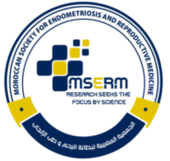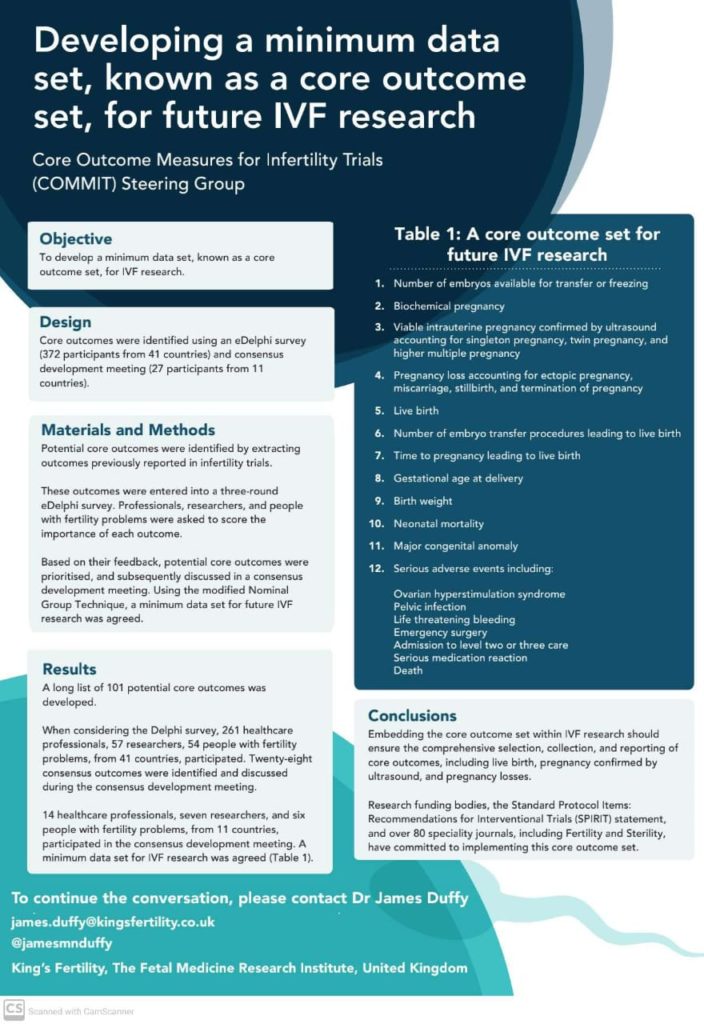Track: ART – LAB, Assisted Reproductive Technology
Poster : ART Lab: Technology
James M N Duffy
Clinical Fellow
King’s Fertility, Fetal Medicine Research Institute, UK
King’s Fertility, Fetal Medicine Research Institute, UK
London, United Kingdom
Objective: To develop a minimum data set, known as a core outcome set, for IVF research. DESIGN: Consensus development study. Core outcomes were identified using an eDelphi survey (372 participants from 41 countries) and consensus development meeting (27 participants from 11 countries). MATERIALS AND
Methods: Potential core outcomes were identified by extracting outcomes previously reported in infertility trials. These outcomes were entered into a three-round eDelphi survey. Professionals, researchers, and people with fertility problems were asked to score the importance of each outcome. Based on their feedback, potential core outcomes were prioritised, and subsequently discussed in a consensus development meeting. Using the modified Nominal Group Technique, a minimum data set for future IVF research was agreed.
Results: A longlist of 101 potential core outcomes was developed. When considering the Delphi survey, 261 healthcare professionals, 57 researchers, 54 people with fertility problems, from 41 countries, participated. Twenty-eight consensus outcomes were identified and discussed during the consensus development meeting. 14 healthcare professionals, seven researchers, and six people with fertility problems, from 11 countries, participated in the consensus development meeting. A minimum data set for IVF research was agreed (Table 1).
1 Number of embryos available for transfer or freezing
2 Biochemical pregnancy
3 Viable intrauterine pregnancy confirmed by ultrasound accounting for singleton pregnancy, twin pregnancy and higher multiple pregnancy
4 Pregnancy loss accounting for ectopic pregnancy, miscarriage, stillbirth and termination of pregnancy
5 Live birth
6 Number of embryo transfer procedures leading to a live birth
7 When applicable → time to pregnancy leading to live birth
8 Gestational age at delivery
9 Birth weight
10 Neonatal mortality
11 Major congenital anomaly
12 Serious adverse events including:
12.1 Ovarian hyperstimulation syndrome
12.2 Pelvic infection
12.3 Life threatening bleeding
12.4 Emergency surgery
12.5 Admission to level two or three care
12.6 Serious medication reaction
12.7 Death
Table 1: A minimum data set for IVF research.
Conclusions: Embedding the core outcome set within IVF research should ensure the comprehensive selection, collection, and reporting of core outcomes, including live birth, pregnancy confirmed by ultrasound, and pregnancy losses. Research funding bodies, the Standard Protocol Items: Recommendations for Interventional Trials (SPIRIT) statement, and over 80 speciality journals, including Fertility and Sterility, have committed to implementing this core outcome set.
ASMR official sponsorship in the publications of the virtual ASMR conference October 17-21 October 2020

